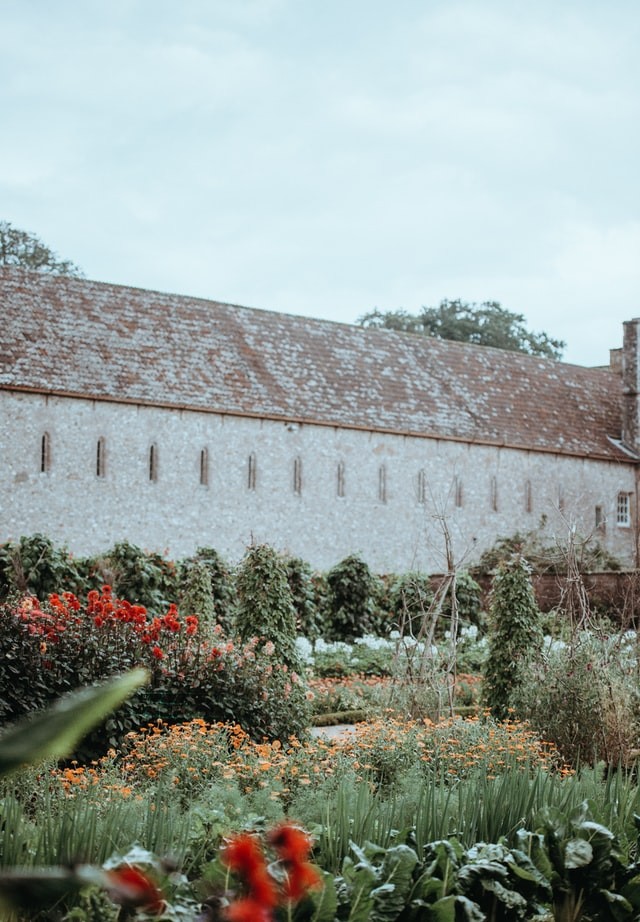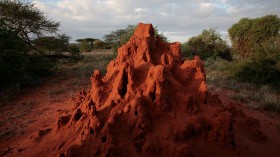It's great that gardens with an eco-conscious aesthetic are popular. The harmony of a successful landscape with its surroundings, in terms of its flora, planting style, and general mood, is one of its defining characteristics.
However, it is important to be aware that the widespread interest in plant naturalism that exists now is a very new trend.
Gardeners have sought distinctly alien plants and strikingly unusual for at least a century; examples include non-native varieties of lilies, roses, azaleas, and hostas.
Crevice garden
 (Photo : Annie Spratt/Unsplash)
(Photo : Annie Spratt/Unsplash)

It's a rock garden that has been carried to the very limit; an extreme design that draws inspiration from improbable, dramatic locations like mountain peaks, windswept seacoasts, and sun-baked deserts, as per The New York Times.
To understand the underlying principle closer to home, all you have to do is glance down. See that lone dandelion with its grip in a tiny crevice between curbstones or sidewalk pavers, with no soil in sight? Its colorful blossoms shout in opposition to everything gardeners believe they know about what plants desire, just like a Saxifraga or Silene clinging to tiny crevices in a wide, rocky environment do.
The Crevice Garden: How to Make the Perfect Home for Plants from Rocky Places," a new book, exhorts us to imitate the processes that take place in such settings, both big and tiny.
Rock-garden designers Kenton J. Seth of Colorado and Paul Spriggs of British Columbia are its authors. They occasionally work together.
They have established themselves as de facto crevice gardening ambassadors, drawing in a larger and younger audience with their ambitious lecture schedule, their Facebook group, Modern Crevice Gardens, which has more than 5,000 members, and now a book.
In contrast to flat gardens, crevice gardens typically have berm-like contours that give the appearance of a natural outcrop and allow the roots of the plants to swell deeply (although not very far sideways).
These gardens may be scaled down to fit in a trough or up for a botanical garden or park. They range from naturalistic to high modernist art.
A preliminary design that the men are frequently requested to come up with is a little larger than a container garden. It's maybe a three by three-foot mound that Mr. Seth described as "a little garden" or Mr. Sprigg described as "a modest outcrop."
Instead of being an eyesore that you wish you didn't have to see, a crevice garden transforms this vacant area into a focus point.
No matter the scale, Mr. Seth suggested that the goal may just be to "create a lovely element in a xeric environment that can elevate plants a bit closer to the observer" or sustain plants that you would not otherwise be able to grow in your environment.
The new way to sustain the environment
In the early parts, they utilized very little soil and a lot of PermaTill, a horticultural-grade aggregate.
Many plants, including 588 hardy cactuses and agaves, did not survive the winter.
This caught everyone off guard because the only thing that keeps somewhat hardy plants alive over the winter is the lack of moist soil.
The growth medium was excessively open, and chilly air was penetrating the ground, Tony Avent and Jeremy Schmidt, the botanic garden's supervisor of grounds and research, and rock garden designer Kenton Seth, of Fruita, Colorado found.
Avent claims that the soil temperature in the crevice garden was just four degrees warmer than it was 18 inches below the surface when it was winter.
The growth mix was modified in later parts to incorporate compost and some native soil to address the issue.
More agaves, resilient cacti, delosperma, arabis, and draba are among the 1,500 species that are now flourishing in the garden; these plants would definitely not survive in typical garden beds in central North Carolina.
The waves created by the undulating crevice slabs lend motion to a rigid medium. Schmidt claims he used a skid-steer loader to lower them over their designated spot, then utilized gravity to assist position them.
There is a pleasant tension seeing seemingly fragile, unique beauty like globularia bloom against such imposing settings, with its chive-like flowers.
This served as an organizing principle for the design, but according to Avent, his fissure garden provides a paradigm of urban sustainability by bringing beauty to the wasteland of repurposed concrete.
According to Seth, it's a fantastic method to green cities, prevent waste from going to the landfill, and introduce people to a wide variety of new plants. "I'm hoping this will serve as an example for cities all across the world," as per Independent.
Related article: 5 Essential Things for a Well-Kept Garden
© 2024 NatureWorldNews.com All rights reserved. Do not reproduce without permission.





